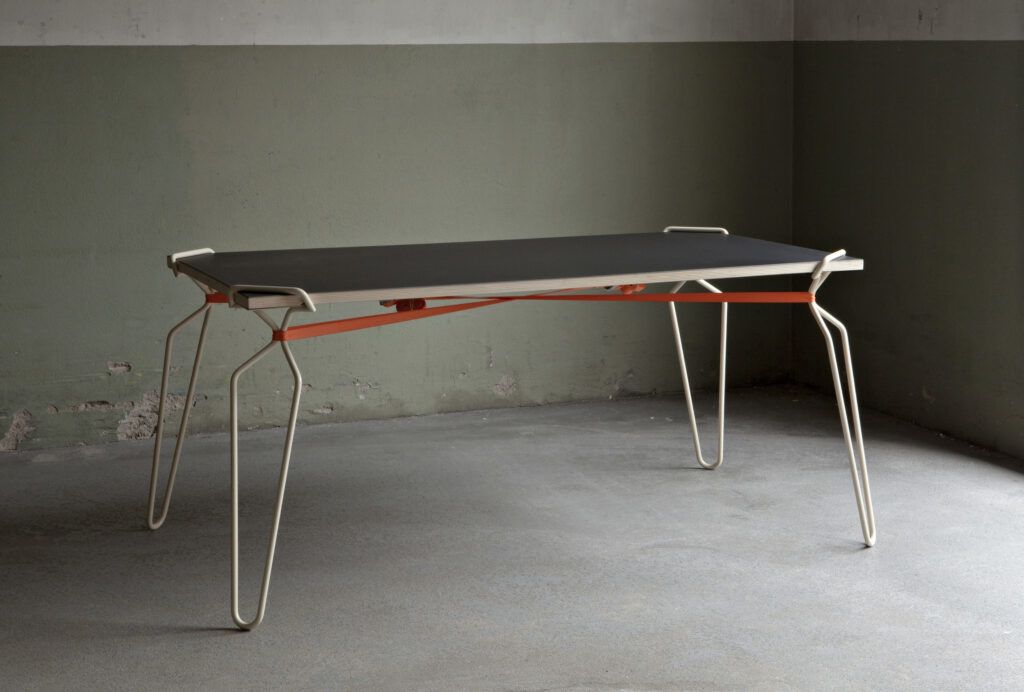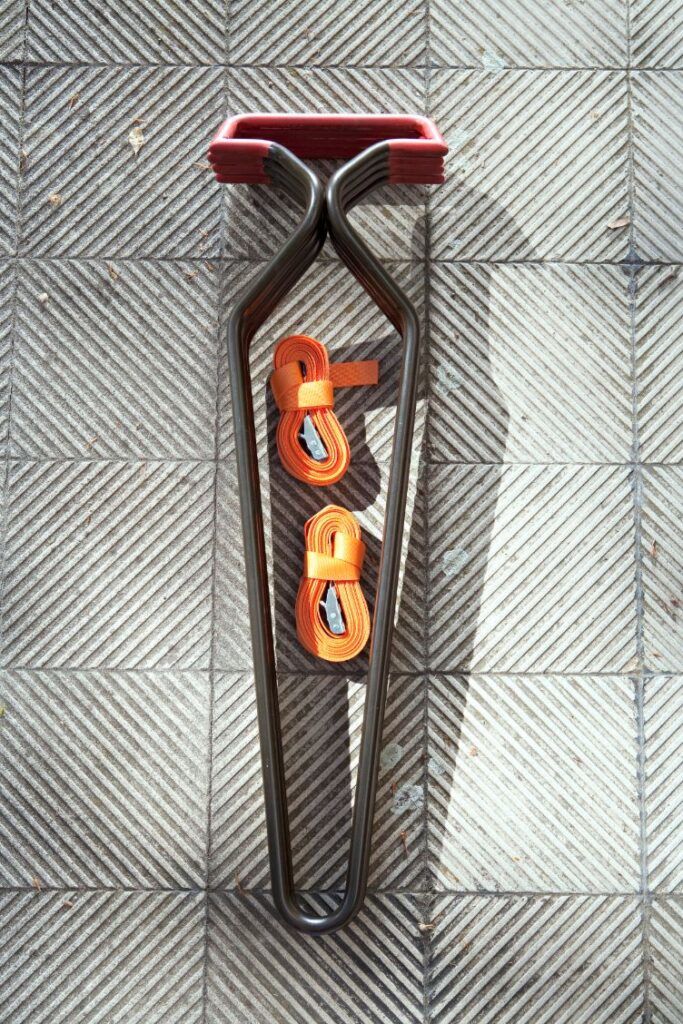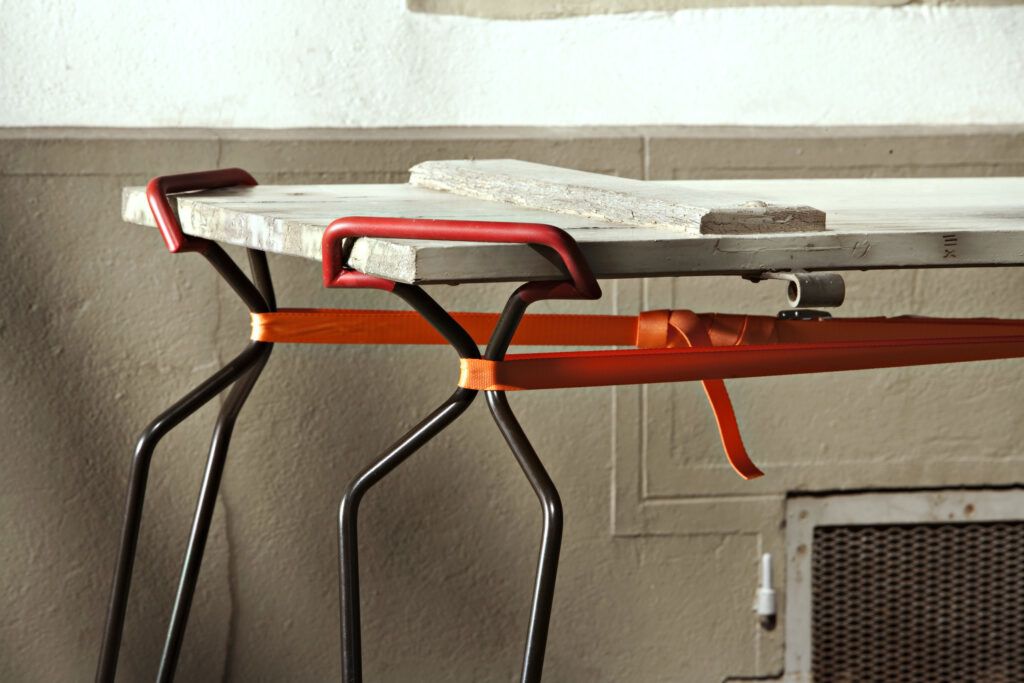Crutches Transform Surfaces Into Tables

Anyone who has visited the office of an architect or studio of a design student should know that tables can be constructed of virtually anything, including hollow-core doors and other cheap household items. However, this design makes that transformation process smoother, easier and faster than ever before.

These so-called table crutches are and do precisely what you might image: they look like the kind of crutch a person uses when injured and they prop up tables in a likewise straightforward fashion, using gravity and a few simple straps to hold the resulting temporary table together.
“An assembly kit of four steel legs that, attached to a board and tensed with lashing straps, creates a very solid table. It is also easy to transport and to adapt to any wood panel format. The legs fit tabletops from 24 to 30mm thickness.”

Of course, the other benefit of this clever table design solution is that the transformation is easily reversible – the ersatz tables can be taken back apart as easily as they were constructed and the constituent pieces are far easier to move than a single-piece solid wood or metal table.

The designer about his work, via Architonic: “My projects represent an approach to design which has more to do with mathematics than with a personal and inward looking composition. I am always in search of the primary source of design – the initial point. It is by far the most important step because each and every decision in the design process is based on it. You end up with a physical manifestation of this idea which is to be judged not after the concept of beauty but as the logical result after a series of consistent decisions in the designing process.”
“Nicola Enrico Stäubli explores a new form of customization: Since the knowledge of the consumer needs will always be limited, he designs with a focus on the greatest possible flexibility. In today’s world of the open source concept, consumers take on the role of co-designers. Nicola’s designs have an openness allowing the hybrid customer the most versatile usage. Beyond a reference to the 2.0 economy, a similar product typology pairs with the requirements of a sustainable design – it’s adaptable to a changing living environment thus providing long lifespan.”




